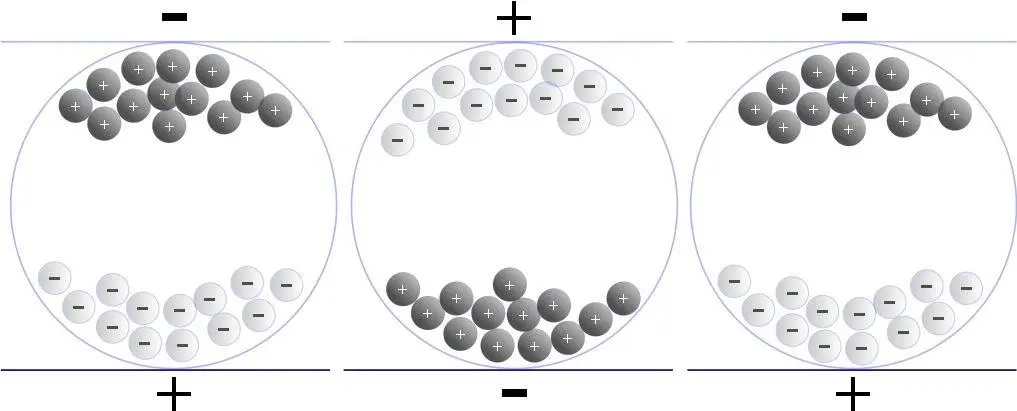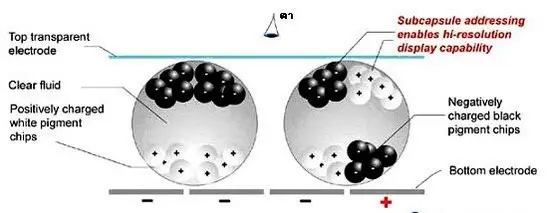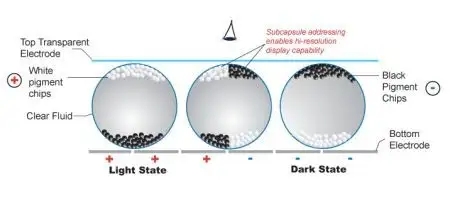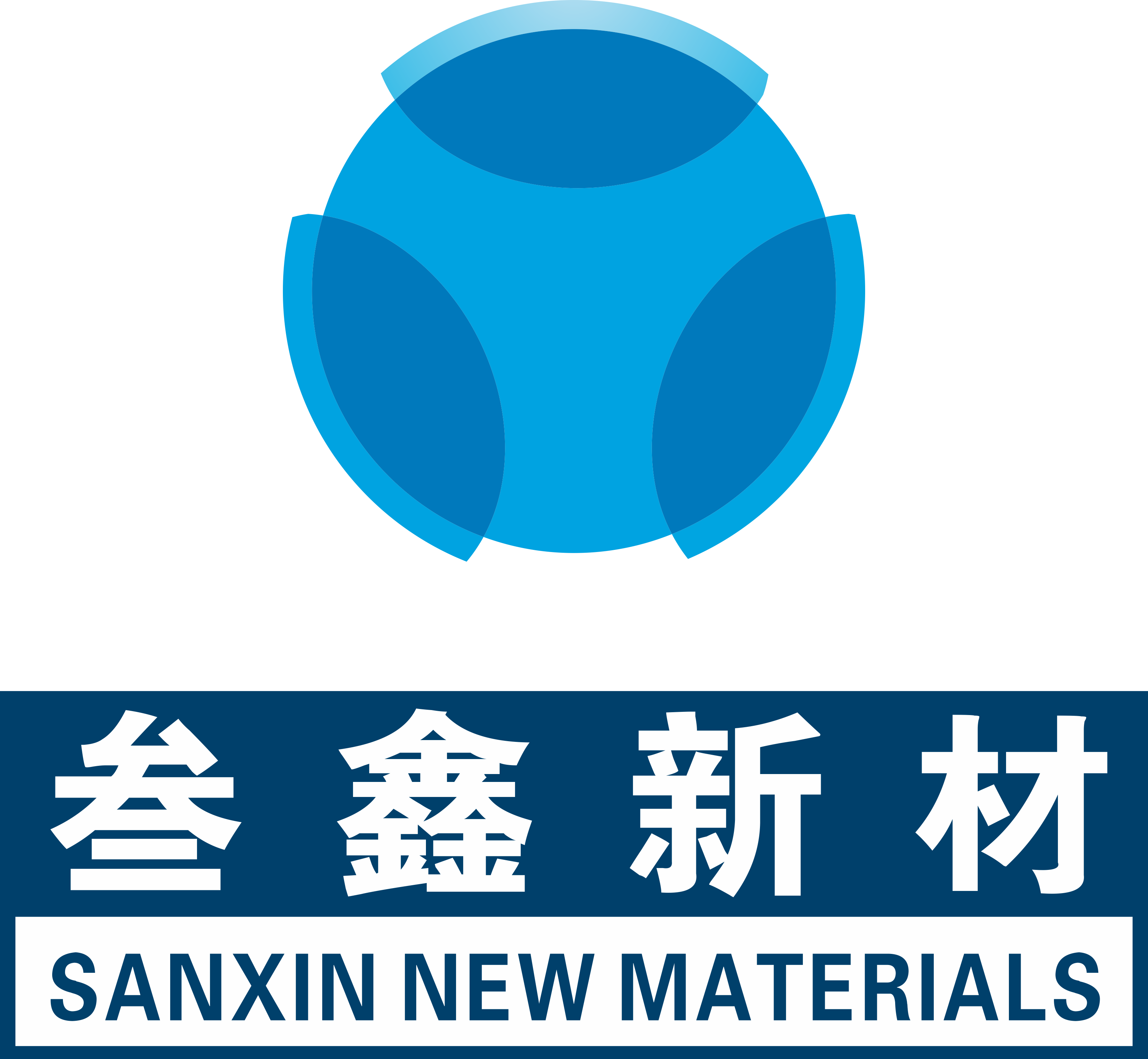Electrical Ink Technology (E-ink)
The technology of Electrophoretic Ink is commonly known as Electronic Ink. The Electronic ink is coated on a plastic film, and then the thin film transistor (TFT) circuit is attached, which is controlled by driving IC to form pixel graphics, creating Electronic Paper Displays (EPD).

Electronic ink uses materials similar to those used in the printing industry, but combines knowledge and technology from chemistry, physics, electronic circuits and other fields to create a new material: electronic ink.

The biggest difference between electronic paper and other display technologies is that electronic paper is a reflective, bistable display technology, so it looks almost the same as traditional paper visually, so it can create eye protection and energy saving benefits.

Principle of two-color e ink
E-ink is made up of millions of Microcapsules, about the diameter of a human hair. Each microcapsule contains electrophoretic particles -- negatively charged white particles and positively charged black particles -- suspended in a clear liquid. Using the principle of positive and negative suction, when the electric field is switched on, the corresponding black or white particles in the block will move to the top of the microcapsule, and the user can see white or black on the block.


A color-changing Prism can be created by using particles of different colors.
Three-color electronic ink principle
E Ink also offers a tri-color E-ink system, especially for Electronic Shelf Label (ESL) applications.
The three-color e-ink system works in a similar way to the two-color system, applying different voltages so that particles of different colors move to the upper layer and see different colors. The tricolor system is developed under Microcup® architecture.

Advanced Color ePaper, ACeP™
In 2016, E Ink released a multicolor E-ink system called Advanced Color ePaper (ACeP™). ACeP™ color electronic paper delivers a full-color gamut display through colored particles without the need for a color filter; It can be performed under Microcapsule or Microcup® architecture.
ACeP™ offers the same features as two-color or three-color electronic paper, such as low power consumption, paper-like vision, and visibility under sunlight.





